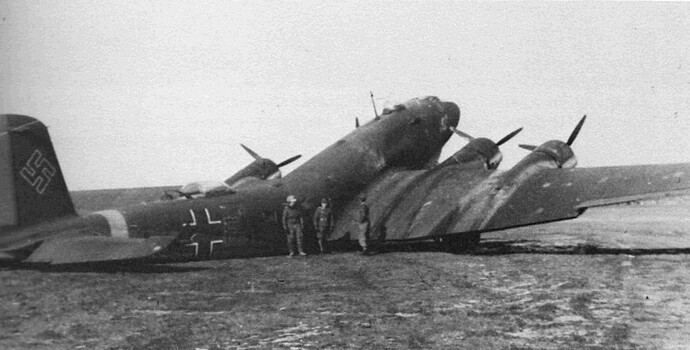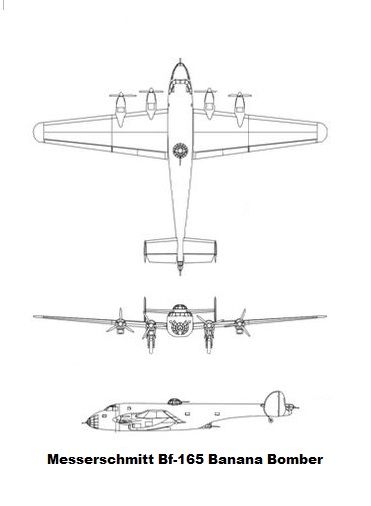…then I hope this won’t break your heart! :mrgreen:
it’s ok, flamethrowerguy! i am aware of it’s structural weaknesses.
No, that’s not what I wanted to say, it is a beautiful plane. The one in the photo was just supposed to be terribly overloaded.
Junkers G-38:
This large, heavy and nearly experimental 4 engine transport was used briefly by the Luftwaffe.
Originally built for Lufthansa only two were completed in 1929 and 1931. The first crashed in 1934, the surviving aircraft was “adquired” by the Luftwaffe in 1939 and provide and very large air transport capacity for soldiers and cargo. ( actually the G 38 have seats in the wingroots, so it was more or less like today wide fuselage commercial planes)
Eventually was destroyed in the ground by british fighters while it served in the Balcanic campaign.

Specifications:

The “Generalfeldmarschall Hindenburg” fueled up. Note the wing passengers windows.

The same aircraft with Luftwaffe markings in Le bourget, June 1940.

In 1937 with the death of General Wever, his rival Ernst Udet convinced Hitler to kill a private project by Willi Messerschmitt to create a relatively fast long range bomber, the Bf165. Roberth Forsyth refers to it in his book “Messerschmitt Me 264.”
It used the the 681hp Jumo 210 engine which powered early Ju-87A aircraft and Bf109 prototypes. When Hitler paid a pre-war visit to the Messerschmitt factory to inspect the Bf109, Willi Messeschmitt ensured they would be confronted by a mock-up of the Bf165. Hitler asked about it and asked what its speed was. When told it could operate at 320kt, much faster than contemporaries which were produced, Hitler scoffed that it would need to be faster than the fastest fighters. At this Messerschmitt complained that it was simply limited by the available power-plants, Hitler dismissed the concept.
Had it been put into production in 1937 even with the limited power-plants available it would have been capable of a 6,000km mission at 22,000ft with one ton of bombs. Had it been built and then re-engined with the DB601 power-plant of the Bf109 fighter the resulting increase of take off weight would have either improved the range or the bomb-load, or both.
Udet’s obsession with dive bombing destroyed Germany’s strategic bombing capability very early on. This was an aircraft capable in 1937 of a return mission from Brest, France to New York.


